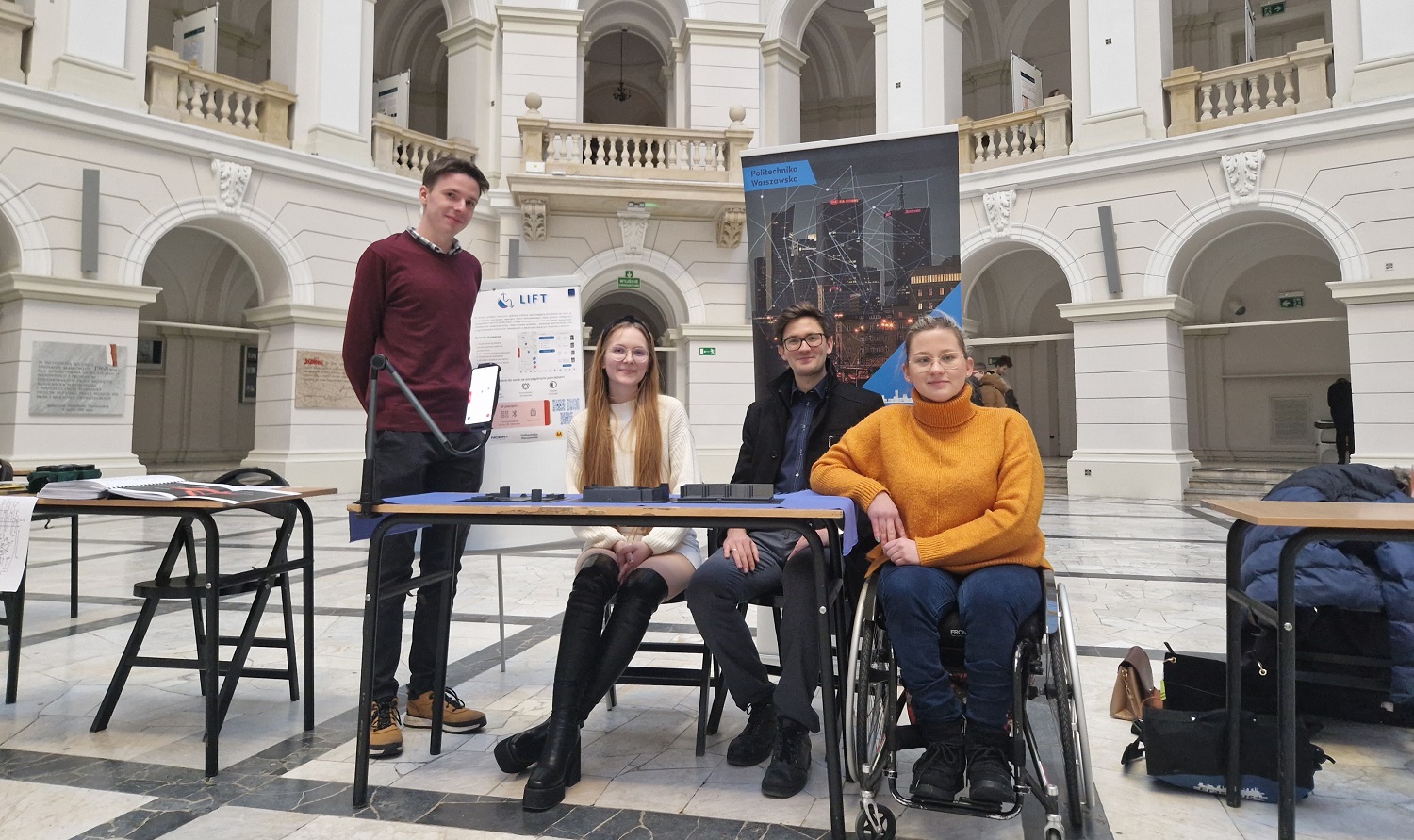The LIFT application will help passengers of the Warsaw metro
Getting to train or metro stations and moving inside these facilities is often a challenge, especially for persons with special needs. Now PW students want to do their bit to help.
The idea for the project was born in the “Smart City” Interfaculty Scientific Club. – Inspired by conversations with persons with disabilities and their experiences, we started working on the LIFT mobile application in 2020 – say Bartosz Wiktorzak, content manager of the project and Mikołaj Domagalski, president of the Club. – The aim is to facilitate moving around the Warsaw metro for people with reduced mobility, the blind, the elderly, as well as parents with prams – they explain.
Where’s the lift?
Despite the facilities available at each station, due to its location underground and the need to find the right lift, the Warsaw metro still causes problems and confusion, especially for people with special needs.
– We mustn’t forget that the design and operation of a metro station is determined by many factors, including, for example, the need to ‘fit in’ into the existing, complicated network and urban infrastructure, the lack of natural lighting or the large number of people traveling – says Mikołaj Domagalski. – We want to help users find the fastest and most convenient path to their destination through a mobile app that uses visual, audible and vibration signals to navigate. It will include stations, platforms, elevators, as well as routes between stations – he adds.
How does it work?
So far, students have created a prototype of the app. After selecting the beginning and end of the route, it allows you to find the nearest lift on the surface, and also displays a list of steps to help you navigate the maze of underground corridors. All this is based on the station’s original model and photos with augmented reality. Thanks to its the integration with the Warsaw Public Transport network, the application also allows you to quickly get from the metro to the right stop of another form of transport. In addition, in the case of an out-of-order lift that stops you reaching a platform, the algorithm proposes an alternative route.
The team also plans to introduce 360 panoramas and positioning in the subway with QR codes and beacons (small, wireless emitters of the Bluetooth signal). Foreigners will also be able to use the app in its English-language version.
Not just the metro
The project received funding in the Rzeczy są dla ludzi [Things are for people] competition organised by the National Centre for Research and Development, which allowed an expansion its scope. The target IT solution is to support the movement of people with special needs inside public facilities related to rail transport, not only at metro stations, but also at railway stations. In addition, it is to cover neighbouring areas when access requires passage through a shopping centre or a network of underground passages. The system will be activated for tests in the Warsaw metro.
– Last spring, during visits to selected Warsaw metro stations: Politechnika, Centrum, Świętokrzyska, and Nowy Świat Uniwersytet, we identified barriers that may be an obstacle to comfortable movement – says Bartosz Wiktorzak. – These stations were visited by a person in a wheelchair and a blind person who did not know the layout of corridors and lifts in the metro. In selected situations, we simulated random events that can occur at stations, such as lift failure – he says.
Based on the research, the team published a report in the form of an article, summarising the barriers encountered. The team also proposed specific solutions, for example architectural solutions, that could compensate for these barriers. They also presented the possibilities offered by the Lift application to improve the quality of using the metro.
What’s next?
As part of further work, students from “Smart City”, along with PW scientists and specialists, will develop the target application and then test its effectiveness with the participation of potential users.
– For example, we will examine the sense of direction and the speed a given route is covered by people with various types of disabilities – stresses Mikołaj Domagalski. – Study visits to other European cities will help us analyse the difficulties and solutions – he adds.
The students also received funding from the Najlepsi z najlepszych! 4.0. [The best of the best! 4.0.] competition, run by the Ministry of Education and Science. This will enable the students to present the results of their work at an international conference for technological solutions supporting people with special needs at the California State University in March.
The list of departments and institutions cooperating with the students is long. It includes, of course, the Warsaw Metro, but also the Public Transport Authority in Warsaw, the Office of Assistance and Social Projects of the City of Warsaw, the Integracja Foundation and the Active Rehabilitation Foundation.
The project “The development of a prototype system supporting the movement of people with special needs inside architectural objects related to rail transport – LIFT” will run until the end of 2024. The persons mainly responsible for its implementation are the members of the “Smart City” Scientific Club: Bartosz Wiktorzak (Faculty of Geodesy and Cartography), Mikołaj Domagalski (Faculty of Electronics and Information Technology), Jerzy Jastrzębiec-Jankowski (Faculty of Electronics and Information Technology) and Gabriela Szewczuk (Faculty of Geodesy and Cartography). The head of research and development work for the project is Dr Paweł Nowak from the Faculty of Civil Engineering.
The ambition is to make the app available on Google Play and the App Store next year.
You can follow the project on its Facebook and Instagram pages.









